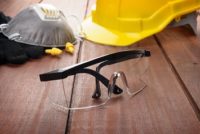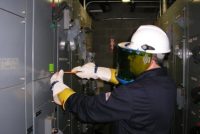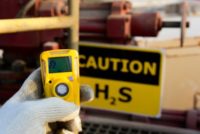No safety technology is changing as fast as that employed in PPE. The devices of just a few years ago are now obsolete by replacements that are lighter, easier to use, and more protective. These resources alert you to developments in the field, and equally important, supply training ideas to get your workers to use their PPE, and use it correctly.
Free Special Report: Does Your PPE Program Meet OSHA’s Requirements?
How many shifts have ended with your hands feeling cold, wet and numb because your winter work gloves couldn’t do what they’re literally made to do? Well, and bear with us here, what if we told you it’s not always the gloves’ fault?
Nationwide, approximately 1.4 million workplaces provide at least some of their employees with respiratory protection. Studies indicate that at these workplaces, gaps exist in their written respiratory protection program, their understanding of Occupational Safety and Health Administration (OSHA) requirements, or the administration of the program. These gaps lead to issues in mandatory compliance or recommended […]
Each year, countless accidents, injuries, and fatalities occur as a result of missing personal protective equipment (PPE) or the failure to properly wear the provided PPE. PPE minimizes exposure to biological, chemical, physical, safety, and ergonomic hazards, and it is the last line of defense between a workplace hazard and the worker. As important as […]
The Occupational Safety and Health Administration (OSHA) has increased compliance activities related to electrical safety regulations and standards over the past few years. This began with the heightened interest in arc flash hazards related to the 2000 National Fire Protection Association (NFPA) 70E standard and became more active after the 2004 edition was published.
For those performing tasks in high-risk industries, personal protective equipment, or PPE, is their last line of defense. It’s important to be as informed as possible about all of the PPE necessary to performing a job safely, but you may have some questions about the proper uses of flame resistant (or FR) garments within your […]
On our latest episode of the EHS on Tap podcast, an expert answered some big questions about the proper uses of flame resistant (FR) garments within a personal protective equipment (PPE) program. Read the transcript of our conversation with Derek Sang, Technical Training Manager for Bulwark FR.
Wearable technology could alert construction workers to nearby vehicles or equipment, preventing caught between and struck-by injuries, a recent study found. A prototype belt with vibrating motors alerted participants to the presence of vehicles and equipment in research performed by CPWR—The Center for Construction Research and Training.
A California appeals court upheld the citation of Home Depot USA, Inc., for violating state safety standards after a warehouse employee suffered a serious foot injury.
Are your workers and business protected against the potential dangers of hydrogen sulfide (H2S) exposure? It may surprise you that subjection to the toxic “sour” gas remains one of the leading causes of workplace gas inhalation deaths, and OSHA recently cited a Texas employer after H2S exposure in a confined space resulted in a fatality. There […]
When an employer provides personal protective equipment (PPE) to all onsite workers (including contractors and subcontractors), does it have any liability or exposure if the PPE fails? Does the fact of whether the PPE was provided for free come into play? This question was recently posed to experts at Safety.BLR.com®—read on to see their response.










